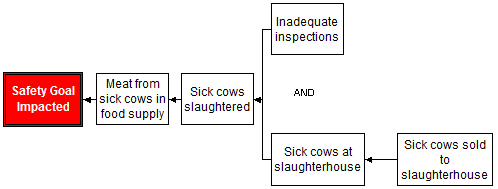By Mark Galley
For a particular failure, loss or incident, people will naturally disagree about what the problem is. Some people will say the problem is this and others will say the problem is that and still others will let everyone know what the real problem is. People see problems differently. This is a given for any root cause analysis facilitator.
Is it possible for everyone to agree on the problem? Yes. It may seem unrealistic until we look specifically at what a problem is. A problem is anything that negatively affects the ideal state. People may see many different issues as a problem, but within an organization the ideal state is already defined. The ideal state within an organization is also known as the overall goals. Any negative deviation from the organization’s overall goals is the accurate, complete and consistent approach for defining a problem. For example, let’s consider your local power plant.
What is the ideal state of that power plant? Let’s say the power plant is supposed to produce 1000 megawatts per day. Any negative deviation from 1000 megawatts is a problem. If the plant produced 900 megawatts then the deviation is 100 megawatts (a production loss). We could even put an economic value on this production loss. But producing power is not the only goal of the power plant. Organizations don’t have a goal. They always have goals (plural).
The safety goal for the power plant is zero injuries. Any injury is a deviation from the ideal state. Some safety incidents are more critical than others. The larger the magnitude of the impact to the goals the more thorough the investigation is. A paper cut is an injury, but it’s not as serious as someone receiving 15 stitches. Some problems are bigger than others. The magnitude of the impact on the goals dictates importance as well as how thorough the investigation will be. Minor incidents have relatively basic investigations while major issues require much more comprehensive analyses.
The ideal state of the power plant also includes no environmental issues as well as no customer service interruptions, no property or material losses, and no excess reactive or rework labor costs. The overall goals of the power plant are safety, environmental, compliance, customer, production, and materials and labor (which are usually captured within maintenance). Any negative deviation to any one of these overall goals is truly what the power plant should focus on for their problem solving and root cause analysis efforts…everyday.
The overall goals change for each type of organization. A hospital has different overall goals than a food processor, an oil company or a bank. Regardless of the organization or industry, the impact to the overall goals dictates where the root cause analysis efforts should be.
The Cause Mapping method to root cause analysis has a specific way of defining every problem by the organization’s overall goals. People naturally disagree about what the problem is. In the Cause Mapping method of root cause analysis it’s much simpler for the facilitator to accommodate disagreements about the problem – it’s expected. The differences provide great insight into people’s view of the problem. To get agreement, ask the participants, as a group, how each of the overall goals were impacted (if at all). Amazingly, people will not disagree about the impact to the goals. They will disagree about the responses to the question “What’s the problem?” However, they will give the same answers to each of the goal questions. Managers and front line people will give the same answers. It’s powerful because it’s so basic. Goals dictate what the problems are.
During an injury investigation in the power plant where someone sprained their ankle, when the facilitator asks “Was anyone hurt?” everyone will answer with “yes, John sprained his ankle.” It’s obvious. If you ask what the problem, people’s responses will be all over the place; he just tripped, the barrier is bad, maybe the floor was slick, inattention to detail, procedure not followed, etc. In your problem solving and root cause analysis investigations experiment with this idea of defining every incident by the impact it has on the overall goals.
To learn more about quickly, clearly and accurately defining problems in your business attend one of our Public Cause Mapping Workshops listed on our web site or bring our workshop to your facility. The Cause Mapping method is an extremely effective systems-based approach to root cause analysis. Visit us at www.ThinkReliability.com to learn more about improving the way your organization analyzes, documents, communicates and solves problems.

